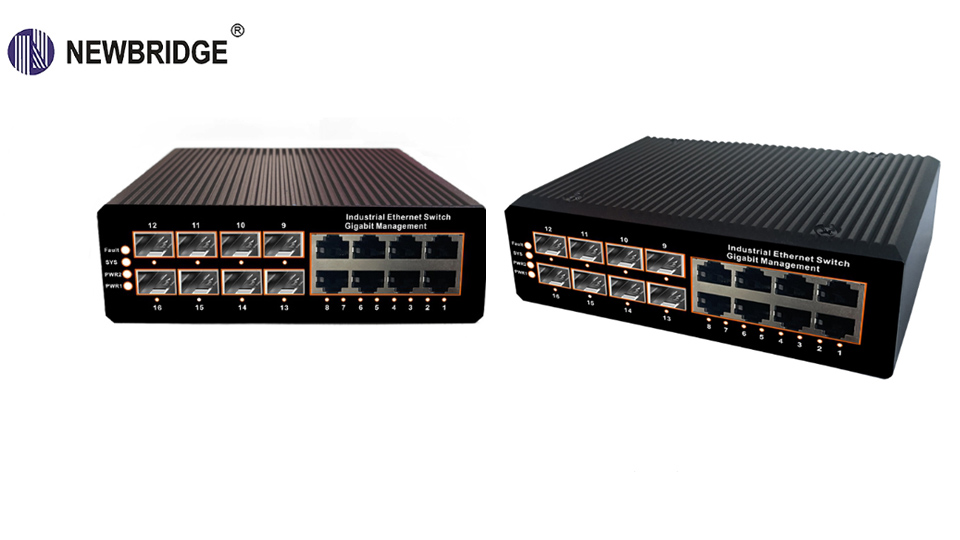Industrial switch is a network communication device applied in the industrial field, used to achieve data exchange and communication between various devices in the industrial field. The following are its characteristics and core differences from ordinary commercial switches:

Characteristics of industrial switches
High reliability: Industrial environments are usually harsh, such as high temperature, low temperature, humidity, dust, vibration, etc. Industrial switches need to have good protective performance and anti-interference ability to ensure stable operation under various harsh conditions. For example, adopting redundant power supplies, fans, and other designs, with dust-proof, moisture-proof, and corrosion-resistant casings, can adapt to a wide temperature range.
High real-time requirements: In industrial automation control systems, real-time data transmission is crucial to ensure precise control and coordination of the production process. Industrial switches support fast packet forwarding and low latency, which can meet the needs of real-time business.
Having redundancy function: In order to avoid production interruption caused by network failures, industrial switches usually support multiple redundancy mechanisms, such as link redundancy, ring network redundancy, etc. When a link fails, it can quickly switch to the backup link to ensure network continuity.
Strong security: Industrial networks involve critical production equipment and data, requiring high levels of security. Industrial switches have security functions such as access control, data encryption, and VLAN (Virtual Local Area Network) partitioning to protect the security of industrial networks.
The core difference from ordinary commercial switches
Work environment
Industrial switch: designed for harsh industrial environments, capable of adapting to extreme temperature, humidity, vibration, electromagnetic interference, and other conditions. It usually has a higher protection level, such as IP67, and can work stably in outdoor or industrial workshop environments.
Ordinary commercial switches: suitable for relatively mild environments such as offices and homes, with high requirements for environmental conditions. They generally operate best in environments with temperatures of 20 ℃ -30 ℃ and humidity of 40% -60%, with relatively low protection levels.
Reliability
Industrial switches: adopt redundant design, such as dual power modules, redundant fans, etc., to improve the reliability of equipment. At the same time, high-quality components are used in hardware design, and strict quality inspection and aging testing are carried out to ensure long-term stable operation. The mean time between failures (MTBF) is usually high, reaching over 50000 hours.
Ordinary commercial switches: Although they also have some reliability design, they are relatively lower compared to industrial switches. In a business environment, the impact of network interruptions is relatively small, so the reliability requirements for equipment are not as strict as in industrial environments.
Real-time
Industrial switch: Supports real-time Ethernet protocols such as PROFINET, EtherCAT, etc., ensuring accurate data transmission and meeting the real-time requirements of industrial automation control systems. Its exchange delay is usually in the microsecond range.
Ordinary commercial switches: mainly used for fast forwarding of data, with low real-time requirements and switching latency generally in the millisecond range. When processing large amounts of data, there may be some delay and jitter, which is not suitable for industrial applications that require strict real-time performance.
Redundancy capability
Industrial switch: It has powerful redundancy functions and supports multiple redundant topology structures, such as ring network redundancy, link aggregation, etc. When a node or link in the network fails, it can automatically switch and restore the network in a short period of time (usually in milliseconds), ensuring the continuity of the production process.
Ordinary commercial switches: Although they also have some redundant functions such as link redundancy backup, the switching time is relatively long, usually in seconds. For some industrial applications that cannot tolerate brief network interruptions, the redundancy capability of commercial switches is often insufficient.
Safety
Industrial switches: With stricter security mechanisms, in addition to supporting conventional access control, VLAN partitioning, and other functions, they may also support industry-specific security protocols such as OPC UA security protocols to protect sensitive data and critical devices in industrial networks.
Ordinary commercial switches: Security functions mainly focus on basic security measures such as user authentication and access control to meet general security requirements in commercial environments. The security protection capability of commercial switches is relatively insufficient for complex security threats and specific security requirements in industrial networks.
